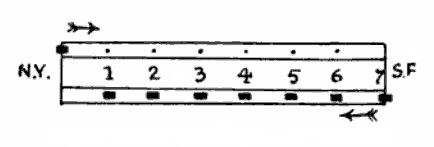The residents of East Union, Ohio, several miles east of Wooster, are considerably worked up over the discovery of a cave near the village. J.M. Davis, Will S. Grady and Alexander Hunter, while out hunting, chased a rabbit into a burrow on a hill near the line of the Cleveland, Akron & Columbus railway. Determined to secure the game, they procured a mattock and shovel and proceeded to dig it out. After excavating the earth to a depth of about four feet they uncovered a curiously shaped stone, upon which were the evident marks of human workmanship. … The stone itself closed the opening into a subterranean chamber, which, with the aid of a ladder and lantern, was found to be in the form of a cubical cistern (perfectly dry), ten feet high, ten feet wide and ten feet long, carved in solid sandstone, with exquisite precision, and containing a few arrow-heads, stone pestle and mortar, the remains of a fire, and in the northwest corner, sitting in an upright position, a human skeleton, in a good state of preservation, with circlets of copper about its neck, wrist, and ankle bones. Its eyeless sockets were turned toward the entrance, and looked sad and ghastly. Upon making the discovery Coroner Huntsberger was summoned, but, viewing the skeleton, refused to hold an inquest. Crowds of people are visiting the cave daily since the discovery.
— The American Antiquarian and Oriental Journal, May 1891
See Home for Good.




